
Home > CICI News > What’s New

| Title | Korea CQ - Epilogue of 'Globalization of traditional Hanji' by artist Lee Hae-eun | ||||
|---|---|---|---|---|---|
| Posted by | webmaster | Hit | 369 | Date | 2023.02.23 |
Dear Korea CQ members, On Febraury 21, we had a special lecture about ‘Globalization of traditional Hanji’ by artist Lee Hae-eun at the Italian Ambassador’s Residence. 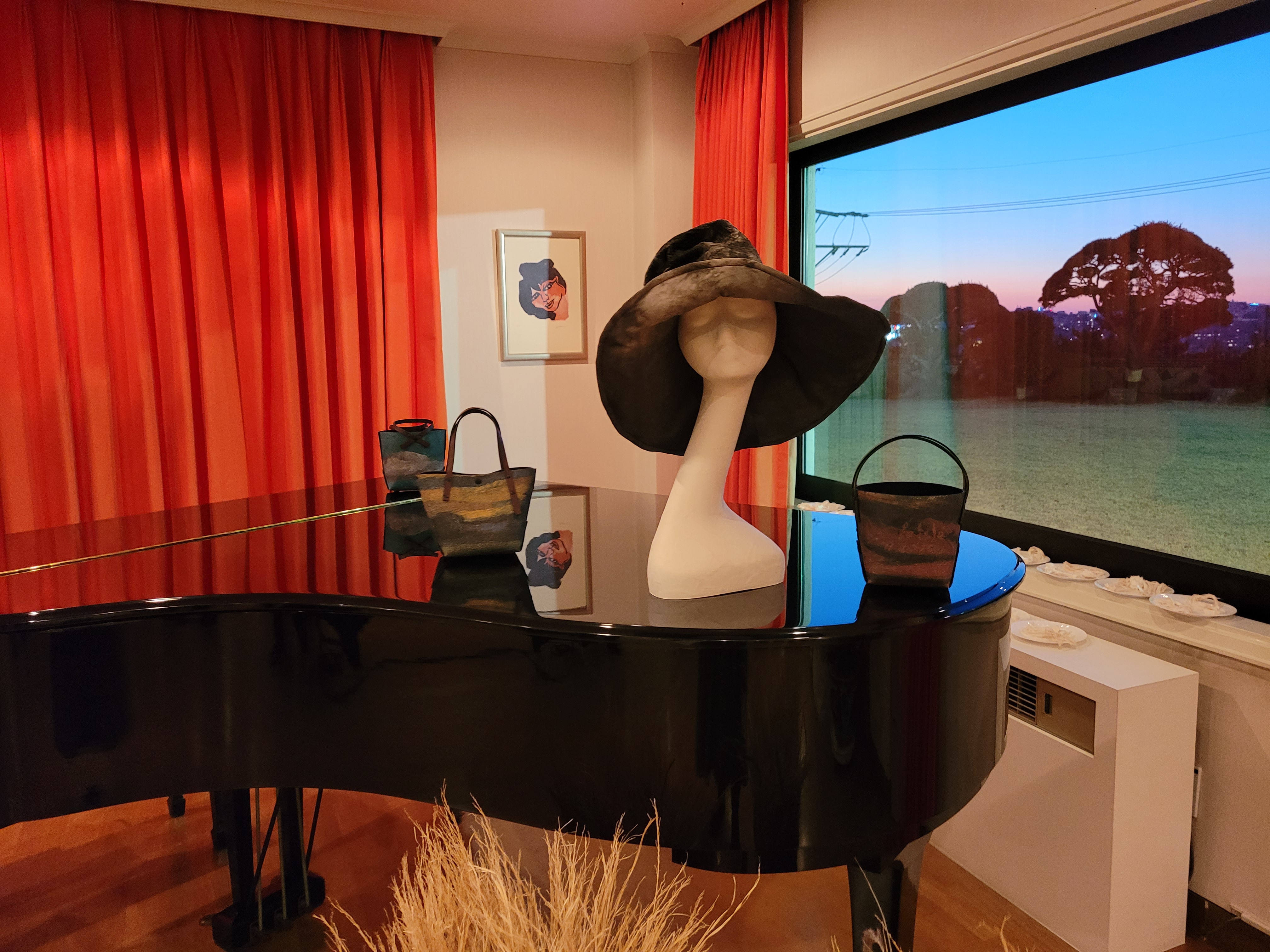 H.E. Federico Failla, Sophia Wong, H.E. Dagmar Schmidt, H.E. Gandi Sulistiyanto, Chiara Ratzenberger, Stéphane Deblaise, Michelle Kim, Lee Hae-eun, Ed Kwon, Choi Jong-moon, Jackey Son, Youngha Go, Myungja Kim, Ian Jeong, Park Yoon-jung, Eugene Bang, Hwang Hae-lyung, Hyunsub Park, Hyunju Lee, James Park, Joseph Young, Kwon Ghung-goo, Choi Jungwha, Didier Beltoise, Hyojin Chung and Yuna Park attended this forum. 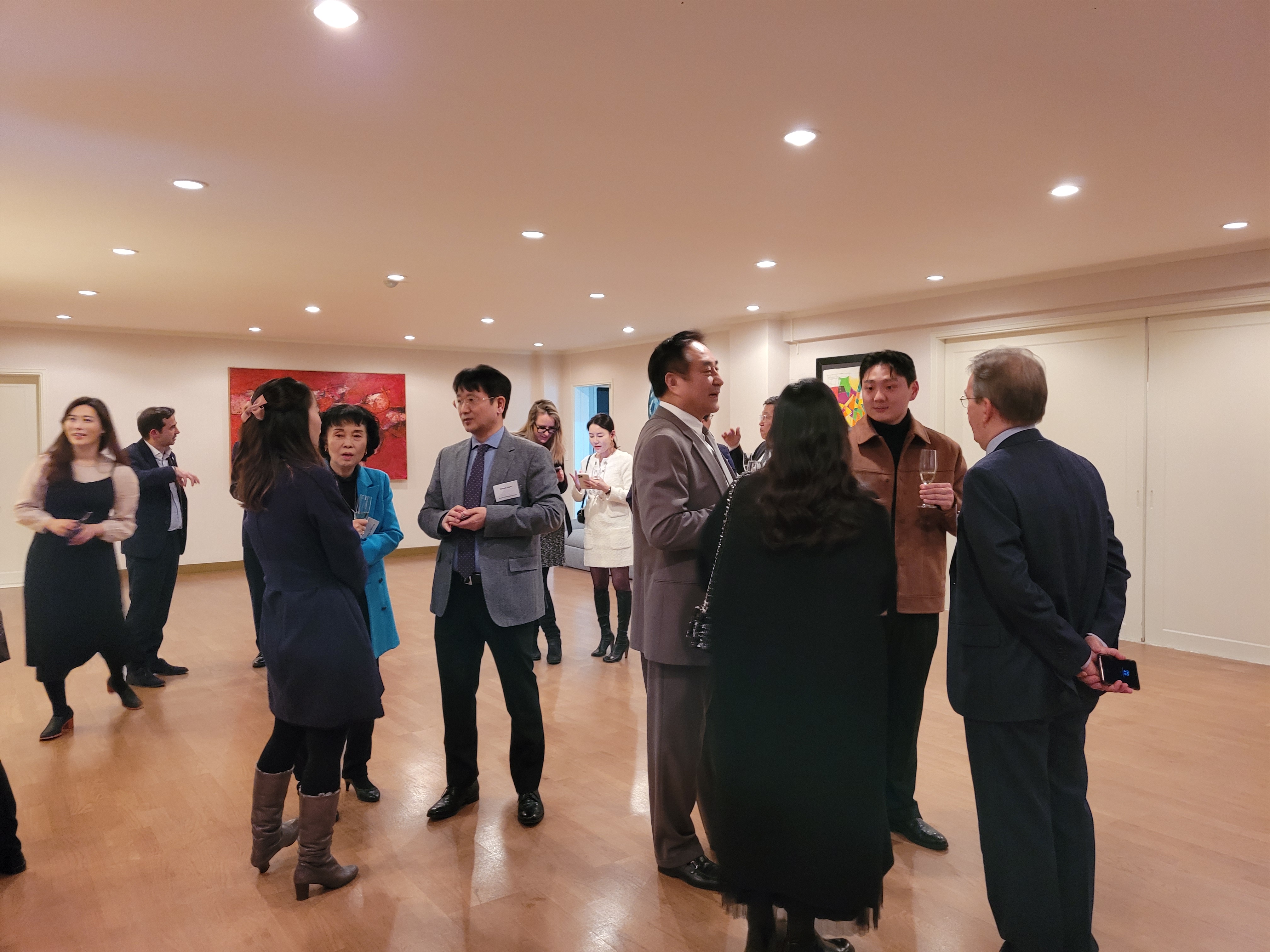 The Italian Ambassador gave a warm welcome and thanked everyone who came. 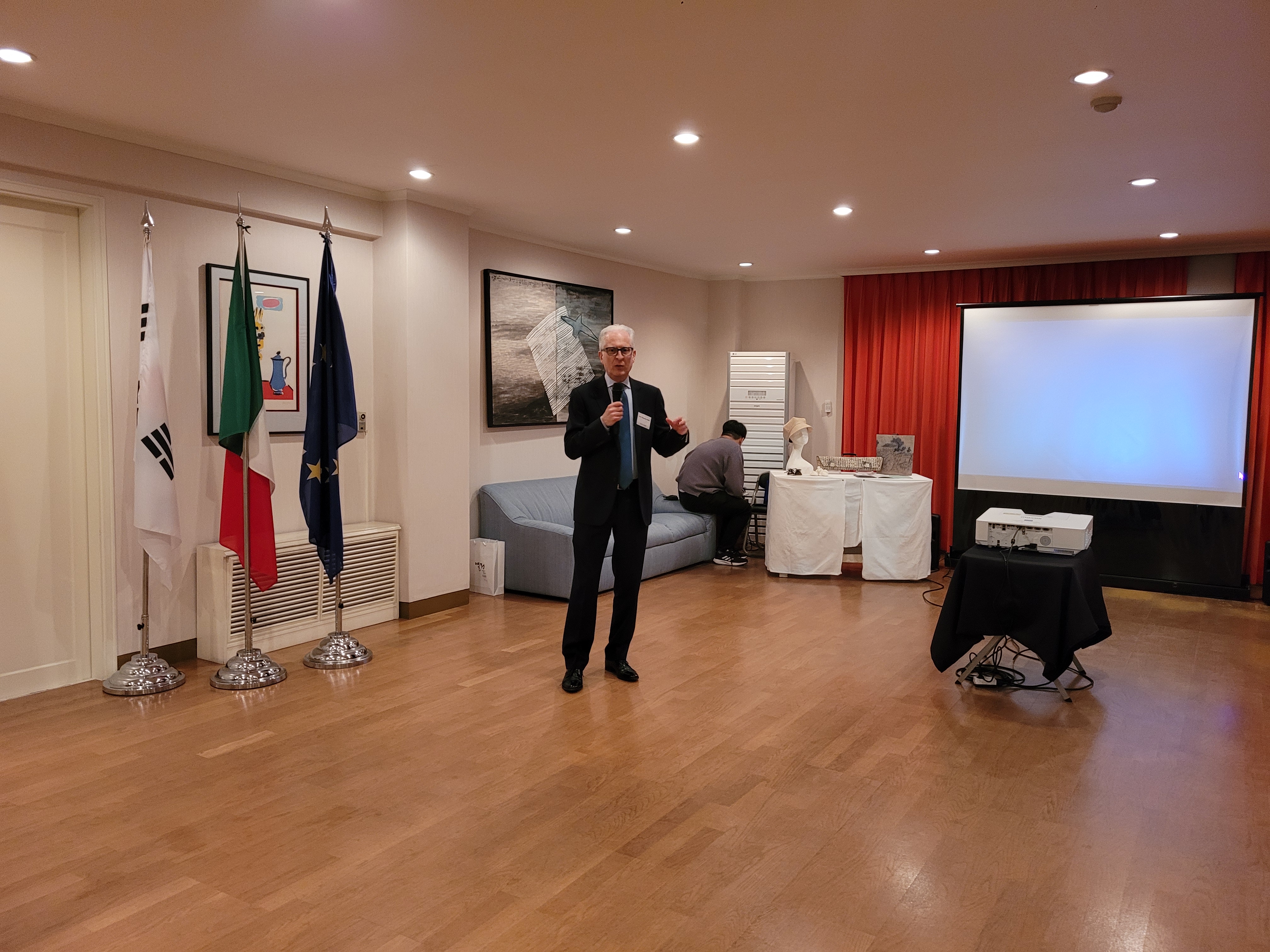 We had a pleasant evening with Italian food and flavorful wines prepared with great care by the Italian Ambassador.  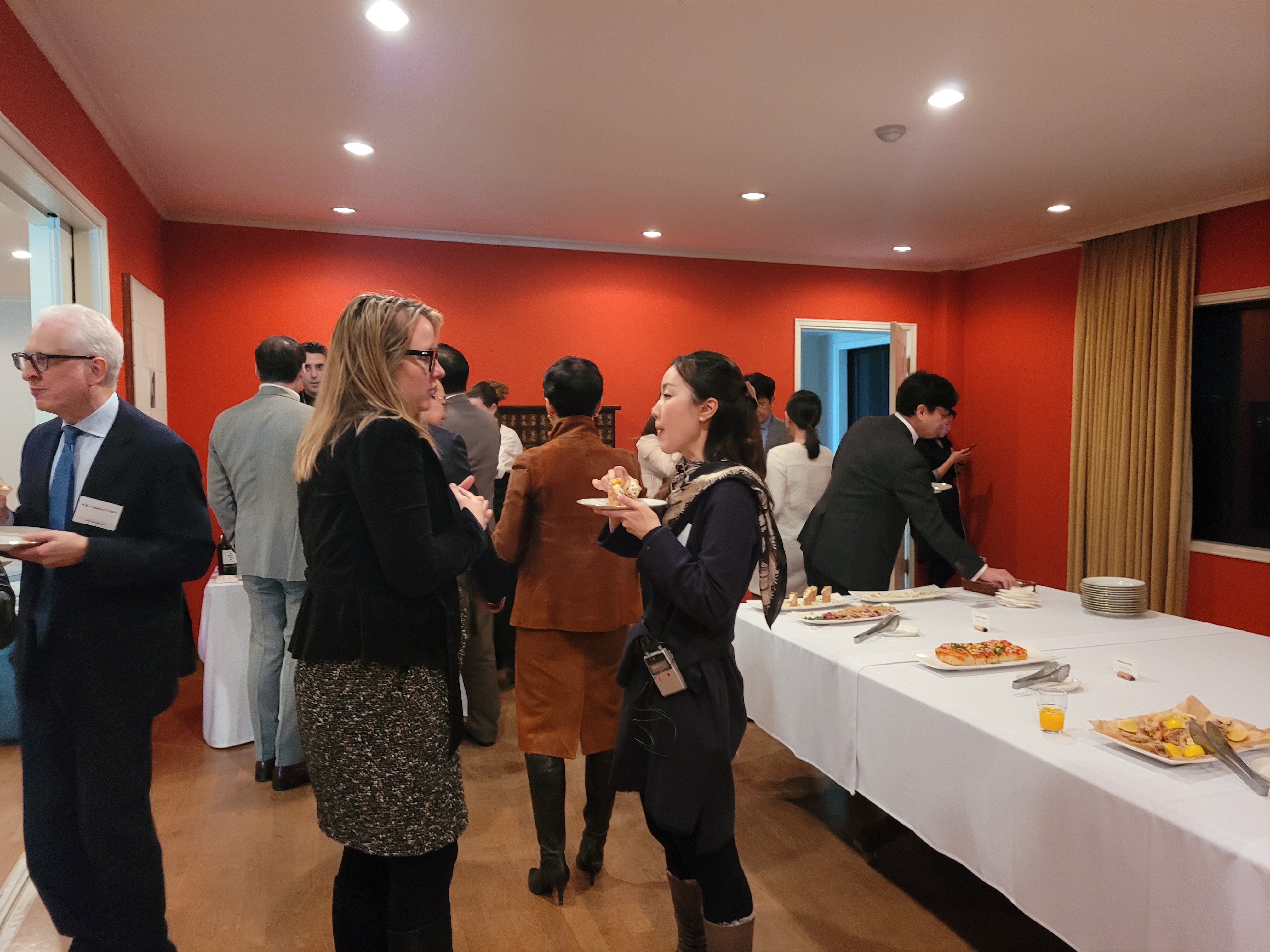 After the delicous dinner, artist Lee Hae-eun gave us a lecture on ‘Globalization of traditional Hanji’. Lee Hae-eun is currently a Certified artist in Korean Craft Museum studio of Cheongju-si, Chungcheongbuk-do Province Culture and Arts Committee member, and has served as an Adjunct Professor at Busan Institute of Science and Technology, a Visiting Professor at Jeonju University, and Craft Instructor at Seongdong Regional Innovation Center in Seoul. She explained the excellence of Hanji and the production process, and presented various suggestions on how to globalize it. 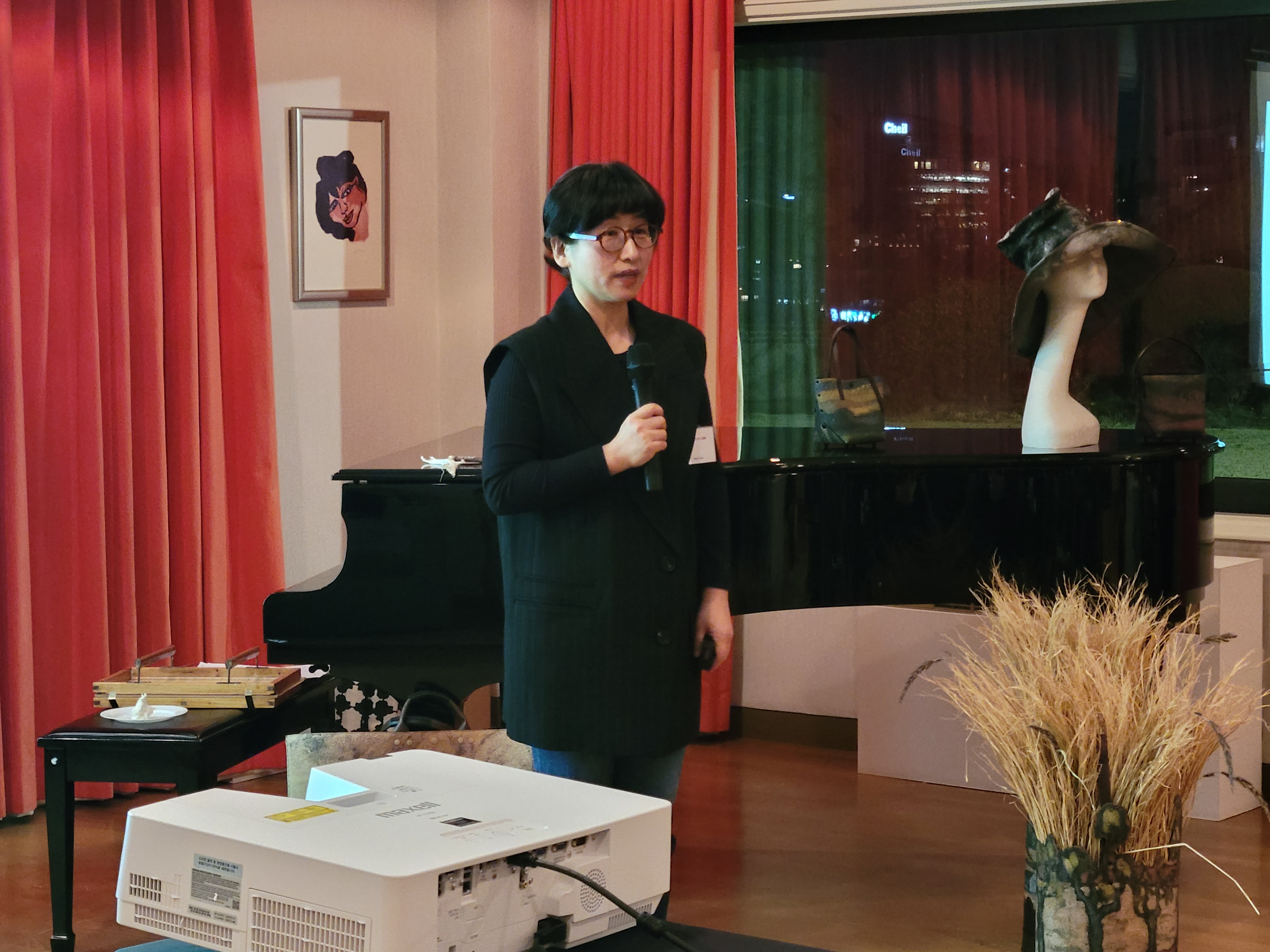 After the lecture, we made fans using traditional Hanji specially prepared by Lee Hae Eun. 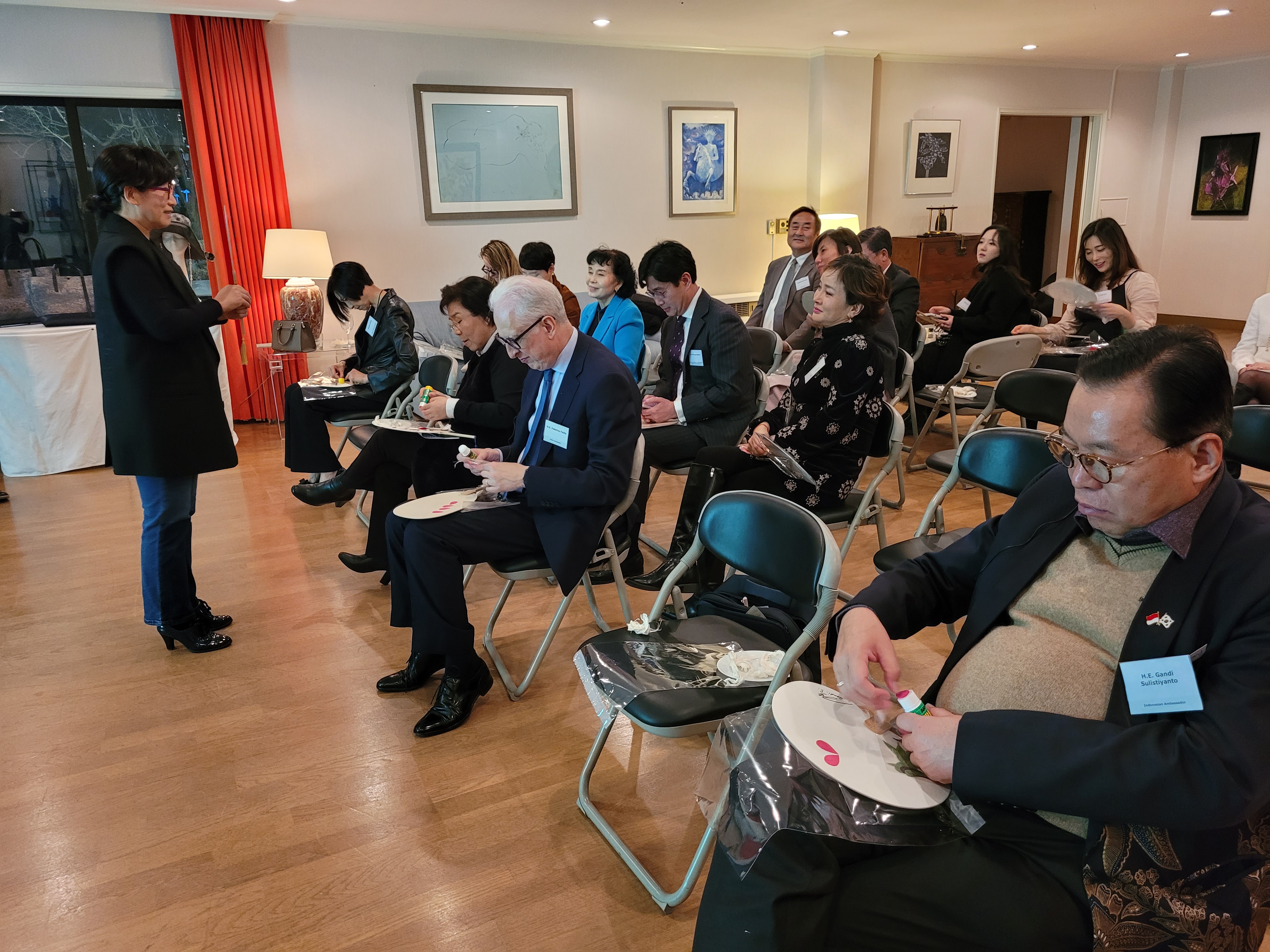 A surprise magic show by Ed Kwon added zest to the lecture.  We would like to thank Lee Hae-eun who gave an intersting lecture for members and H.E. Faderico Failla and Sophia Wong for inviting members to their residence for this wonderful gathering. We would also like to express thanks to all members who attended despite their busy schedules, as well as Hyojin Chung for her interpretation help. 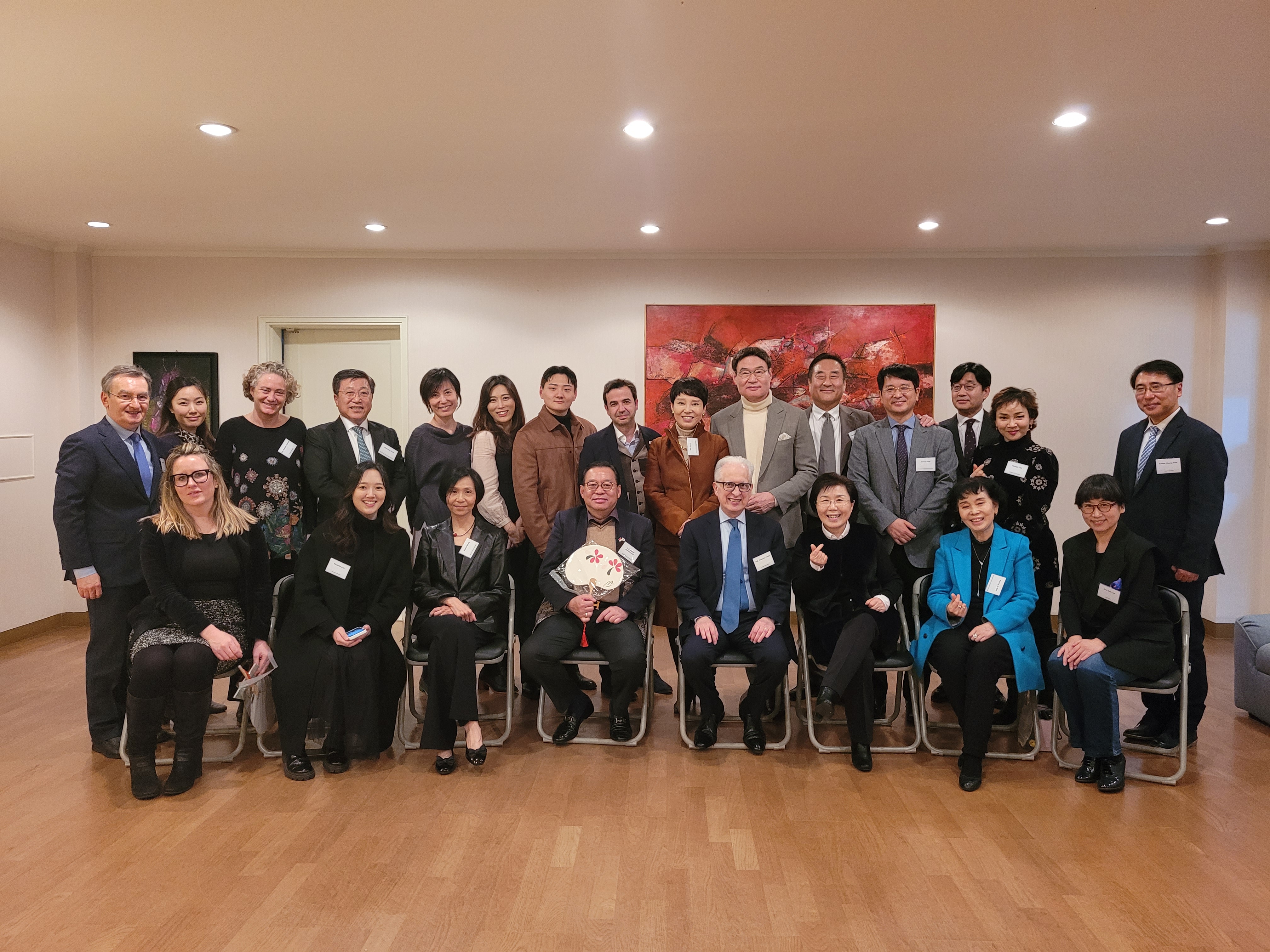 For more pictures, please click the link below. https://photos.app.goo.gl/vrhVJKiP25Zds5x47 Globalization of traditional Hanji by Lee Hae-eun Hello, I am Lee Hae Eun, and I’d like to talk about Korean traditional paper, ‘Hanji’ today. Korea, China, and Japan all have their own traditional paper. There is Korea's 'Hanji' made from mulberry trees, China's 'Seonji' made from rice straws, and Japan's 'Hwaji', also made from mulberry trees. The different materials and methods create unique characteristics for each type of paper. Hanji is durable, well-ventilated and has excellent preservation. Seonji is rough and weak, but absorbent, so it is good for writing or drawing, and Hwanji is compact and smooth. To make Hanji, paper mulberry trees are first harvested, dried, and then the outer bark is removed. Then, the peeled bark is boiled, washed, and subjected to a process called ‘Gohae’, in which the fibers of the mulberry tree are pounded. Evenly pounded mulberry fibers should be stired in water, and then the water is squeezed out. In the past, the traditional method of ‘Oebalttugi’ was used, but in modern times, the ‘Gadumttugi' method is mainly used. It is finished with ‘Dochim’, the process of drying mulberry fibers made in the form of thin paper and then spreading them evenly. Since I am not a Hanji maker, I mainly work with Hanji made by ‘Gogung Hanji’ in Jeonju, which also provides Hanji to the Louvre in Paris. In this way, I overlap one or several layers of Hanji to give a wrinkled effect. I first apply lacquer on Hanji, because lacquer protects Hanji from water and harmful insects. To avoid it from looking too plain, I decorate Hanji by coloring or sewing, and adding more wrinkles to it to make it look like animal skin. I've been properly working with Hanji since 2011, but I actually worked with textiles right after graduating from college. When I was making Jogakbo, I discovered Hanji, the most Korean material. I was totally fascinated by its durable and preservable characteristics, so I decided to study Hanji at graduate school. So, as a graduation exhibition in 2011, I made a bag made of wrinkled Hanji with lacquer. The reason why I make wrinkles by overlapping 2-3 sheets of Hanji is because the wrinkles make it flexible, which lets me get the shape of the bag. I also made a bag using printed on Hanji with a press and then embroidered with Korean traditional patterns. At the Frankfurt Paper Fair in 2017, I presented shoes made of Hanji for newborn babies. I also made a bag with black and white gradation coloring by coating Hanji with ink. In addition to bags, I designed hat-shaped lamps inspired by Gat (Korean traditional hat) and bungee hats with brims for women. Recently, I am trying ‘three-dimensionalization of a flat surface’ by using the paintings made by my father who was a painter. I am trying to make eco-friendly products by making the best out of traditional Hanji. |
|||||














